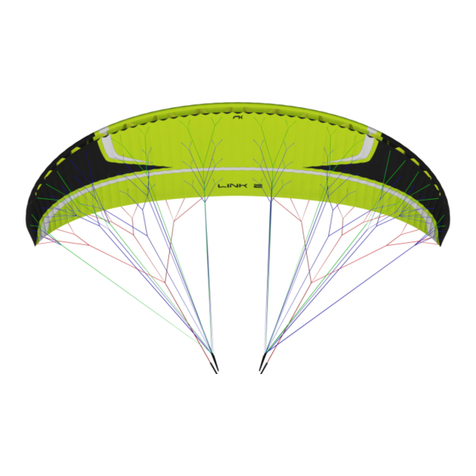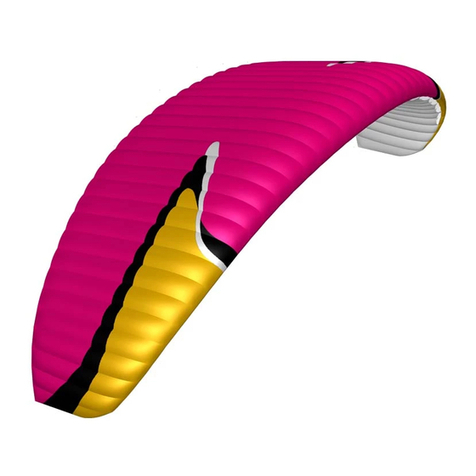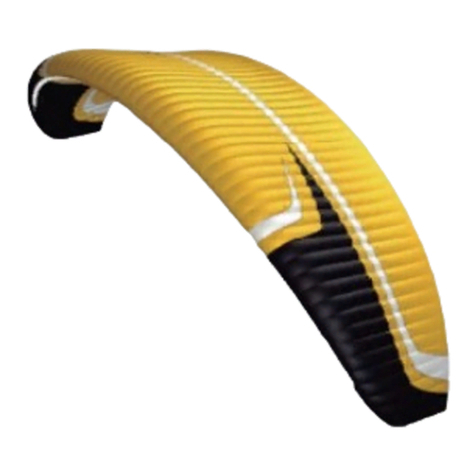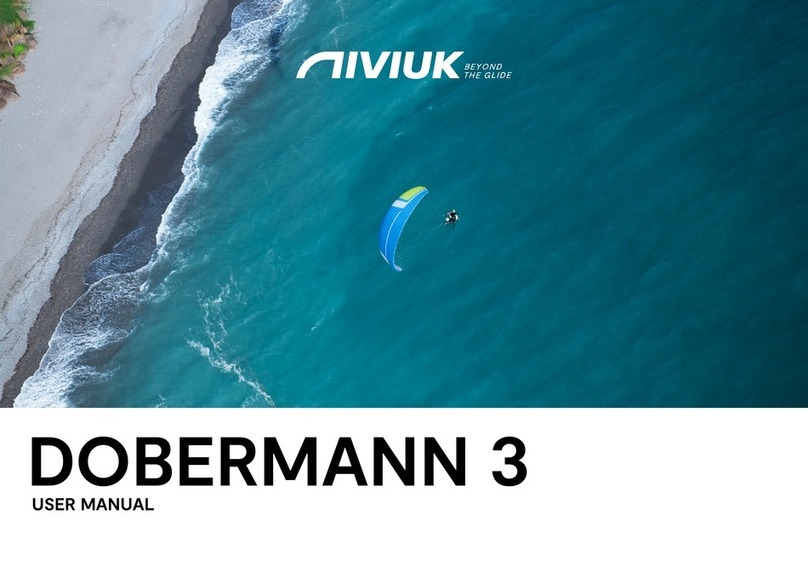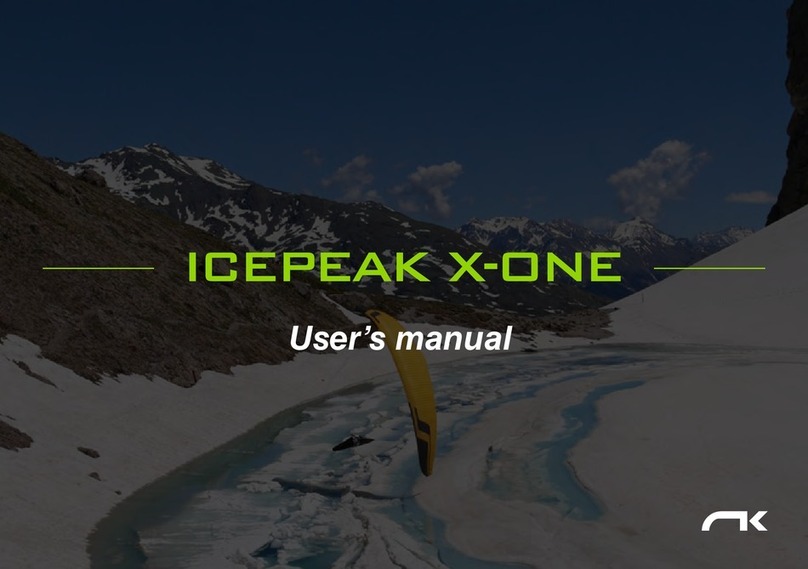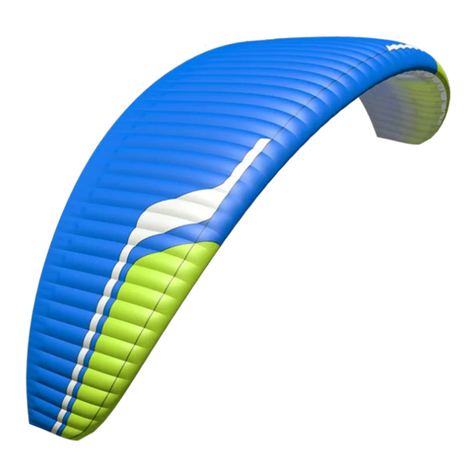8
but you can symmetrically apply the brake lines with a quick deep pump
to quicken the re-inflation. Release the brake lines immediately to recover
optimum flight speed.
Negative spin
This configuration is out of the normal flight behaviour of the PEAK. Certain
circumstances however, may provoke this configuration such as trying to turn
when the wing is flying at very low speed (while heavily braking). It is not easy
to give any recommendations about this situation since it varies depending
on the circumstances. Remember that you should restore the relative air
speed over the wing. To achieve this, progressively reduce the pressure on
the brake lines and let the wing gain speed. The normal reaction would be
a lateral surge with a turn tendency no greater than 360º before restoring to
normal flight conditions.
Parachutal stall
If it does happen, the feeling would be that the wing would not be advancing,
you would feel a kind of instability and a lack of pressure on the brake lines,
although the canopy would appear to be correctly inflated. The correct
reaction would be to release the pressure on the brake lines and push the A
lines forward or rather lean your body to any side WITHOUT PULLING ON
THE BRAKE LINES.
Deep stall
The possibility of the PEAK falling into this configuration during normal flight
is very unlikely. This could happen if you are flying at a very low speed, whilst
over steering in a number of manoeuvres and in turbulent conditions. To
provoke a deep stall you have to take the wing to minimum flight speed by
symmetrically pulling the brake lines, when you reach this point, continue
pulling until you reach 100% and then hold. The glider will first fall behind
you and then situate itself above you, rocking slightly, depending on how the
manoeuvre was carried out. When you start to provoke a stall, be positive and
do not doubt an instant. Do not release the brake lines when half way through
the manoeuvre. This would cause the glider to surge violently forward with
great energy and may result in the wing below the pilot. It is very important
that the pressure on the brake lines is maintained until the wing is well
established vertical above.
To regain normal flight conditions, progressively and symmetrically release
the brake lines, letting the speed be re-established. When the wing reaches
the maximum advanced position ensure that the brakes are fully released.
The wing will now surge forward, this is necessary so that air speed is
completely restored over the wing. Do not over brake at this point because
the wing needs to recover speed to quit the stall configuration. If you have to
control a possible symmetrical front stall, briefly and symmetrically pull on the
brake lines and let go even when the wing is still ahead of you.
Wing tangle
A wing tangle may happen after an asymmetric collapse, the end of the wing
is trapped between the lines (Cravat). This situation could rapidly cause the
wing to turn, although it depends on the nature of the tangle. The correction
manoeuvres are the same as those applied in the case of an asymmetrical
collapse, control the turn tendency by applying the opposite brake and lean
your body against the turn. Then locate the line that reaches the stabiliser
that is trapped between the other lines. This line has a different colour and
belongs to the external lines of the C riser.
Pull on this line until it is tense, this should help to undo the wing tangle. If
you cannot undo the tangle, fly to the nearest possible landing spot, control
the flying course with your body movements and a little pressure on the
opposite brake. Be careful when attempting to undo a tangle if you are flying
near a mountainside or near to other paragliders, you may lose control of the
flying course and a collision may occur.
Over handling
Most flying incidents are caused by incorrect actions of the pilot, which
chained one after another creates abnormal flying configurations (a cascade
of incidents). You must to remember that over handling the wing will lead to
critical levels of functioning. The PEAK is designed always to try to recover
normal flight by itself, do not try to over handle it.
Generally speaking, the reactions of the wing, which follow over handling, are
neither due to the input made or the intensity, but the length of time the pilot

